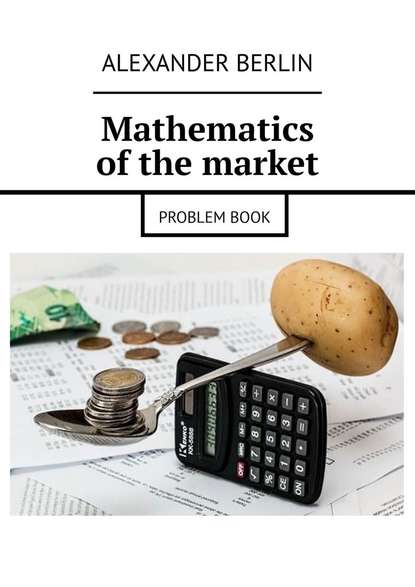По всем вопросам обращайтесь на: info@litportal.ru
(©) 2003-2024.
✖
Mathematics of the market. Problem book
Настройки чтения
Размер шрифта
Высота строк
Поля
Flows enter the distribution system.
The distributionsystem can the request handle immediately or with some delay. The refusal can be of two types:
– the refusal to accept the goods because of lack of demand;
– or installation on waiting of implementation (accumulation of goods)
There are two types of distribution systems.
First type performs the task as quickly as possible to sell the goods without any additional conditions. In queuing theory, such a system mass service is called “full accessibility system” because it provides equal access to the system of consumption, and this system can be not taking into account for calculation of behavior of the market.
Systems of the second type, distribute the goods, given the specified priorities and limitations for individual consumers or consumption. For example, the sale of tobacco, alcohol, weapons… systems of this type are called with not full access.
If the order is accepted, the distribution system is trying to give its to consumers to the consumer network
In our model we have included in the distribution system is an important point, which consists in the ability to influence the demand by setting prices (commonly given with the consideration the price of the manufacturer).
The price may limit demand (privileged goods) or stimulate it (discounts, sales, or other action).
Consumption system serves the flow of goods. This is reflected in the fact that individual consumer or group of consumers can buy the offered goods or to refuse from the purchase. Incoming goods can be purchased, any free group of consumers.
If all consumer groups are busy, then the system of consumption is refuses from the purchase of goods, i.e. appear goods losses. State busy – we will name situation when group of consumers, which during the observed period of time, has acquired the maximum possible the quantity of goods and withdrew for some time from consumption.
Not purchased the product can be not offer, for example, to destroy – it named obvious losses. This type market are named a system with obvious losses.
Distribution system can put the product to the queue of waiting for the realization (for the accumulation and, storage of products). This type market is named a system with waiting.
In this case it is important to know the waiting time. It may exceed a reasonable time (the assigned waiting time). In this case we speak of conditional losses. Since the goods available for sale and after a certain time is removed from storage in accordance with agreed terms and conditions.
If the share of refusals of the goods received exceeds a certain number, it indicates overproduction, and requires measures to eliminate such losses.
1.2. Relative consumption. The unit of measure of supply and demand
In order to apply the methods of Queuing theory to the calculation of the basic economic processes, it is necessary to solve one of the key issues of the economy – to determine the product unit measures supply and demand (A-relative consumption).
Let’s start with a quote of Keynes [3.1].
“The difficulties that most bothered me at process writing this book, and I couldn’t clearly articulate their thoughts;
first, the choice of units measurements, suitable for research of economic system as a whole;…”.
“That the units, in terms of which economists commonly work, are unsatisfactory can be illustrated by the concepts of the national dividend, the stock of real capital and the general price-level:”
“The community’s output of goods and services is a non-homogeneous complex which cannot be measured, strictly speaking, except in certain special cases, as for example when all the items of one output are included in the same proportions in another output”.
We will try to find an indicator of demand. Let’s call it the relative consumption. – A
He can to acquire the following extreme values.
If the consumer has satisfied his need for this product, P
=1,
If the consumer is just starting to buy a goods P
=0.
Let’s is use your experience.
Do you love cakes? I will sell them to you. You will buy them and will desire buy more. I’m going to sell more and more. Finally, you will begin to eat 10 cakes a day. And I offer you still. You say, “Enough!”
I suggest to You free of charge for 12 cakes a day, and You ungrateful saying “No!”. Moreover, buying cakes, You will some time to consume them, and not buy a new one.
What is it? It is the overproduction!
So the current state of the user can be reflected by the value of the relative consumption
0 ≤ P
≤ 1
Let’s continue the search for the mathematical determination of relative consumption.
Introduce the unit (let’s call it a) that will allow us to measure supply and demand “relative consumption”.
It is the ratio of real consumption A
to the maximum possible A
It will ratio
A
. = A
/ A
.=a
For most of the considering cases we can assume that prices A
and A
are equal so the relative consumption is a dimensionless quantity.
When determining the maximum consumption, we assume that no material (money, prices) and external factors (season, fashion) do not limit the consumer. Then the maximum consumption in a given period will be equal to A
.





